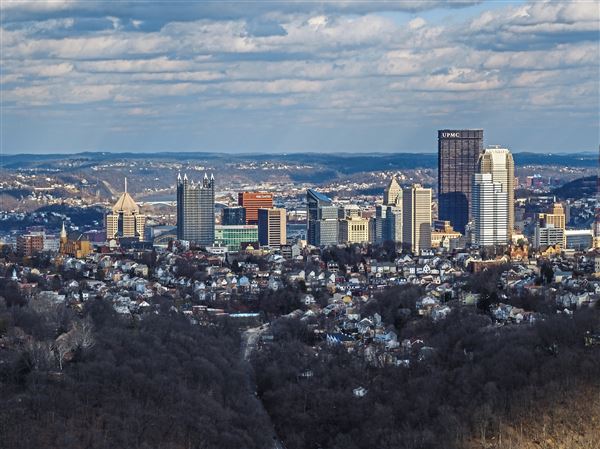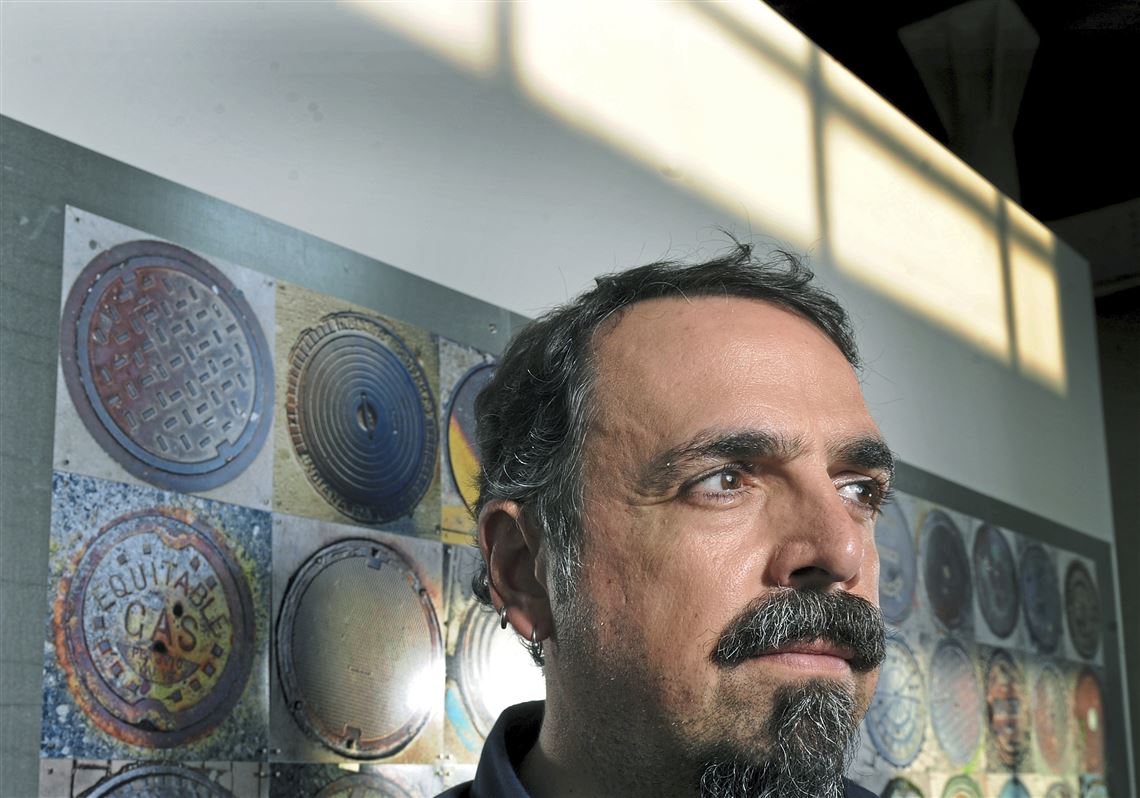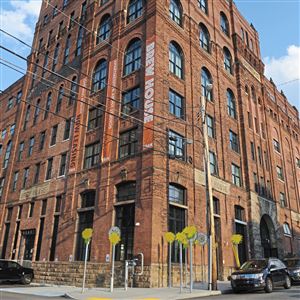Before there was tony Lawrenceville and rising Millvale, the South Side sheltered a struggling Pittsburgh art community.
Kathleen Zimbicki’s Studio Z Gallery opened in the early 1980s, and Silver Eye Center for Photography, which moved this year to Bloomfield, began in 1979. And then there was the Brew House, the South Side’s original artist colony.
The Duquesne Brewery made beer here from 1899 until it closed in 1972. A decade later, an innovative group of artists who recognized the value of the historic structure began to explore its possibilities for living and studio space.
Some moved in and began to renovate the high-ceilinged industrial areas. In 1993, they formally established the nonprofit Brew House Association. The massive red-brick building has provided support and haven for some of Pittsburgh’s unique and charming artistic endeavors, including the Black Sheep Puppet Festival and the Industrial Arts Cooperative, stealth progenitors of the “Carrie Deer” at the Carrie Furnace in Swissvale.
Its future looks bright again after renovations to the building and a split into rental and arts divisions.
The Brew House Lofts include 76 apartments, some market rate and others with rents based on income. Applicants who satisfy the managers’ definition of “artist” receive preference on its waiting list.
The Brew House Association, after a hiatus of several years, is re-emerging under the leadership of Olivia Payne to provide a place for artists to explore, communicate with one another, exhibit and develop professionally.
She became executive director last year and is a staff of one with a hard-working board, Ms. Payne said. The East Liberty native holds a bachelor’s degree in professional studies with a concentration in nonprofit leadership from Duquesne University. She is the former director of operations for the Hillel Jewish University Center of Pittsburgh.
The association has three areas of focus: the Gallery, the Distillery and the Cluster. Funding has come from the A.W. Mellon Educational and Charitable Trust through the Pittsburgh Foundation, the Fine and R.K. Mellon foundations, Heinz Endowments, and Rivers of Steel.
The Distillery program offers seven artists a year of studio space at a discounted rate, coupled with the opportunity for professional development with community mentors. The 2017 program artists will show the fruits of their experiences in an April gallery exhibition.
The Cluster comprises five office/studio spaces that are subleased to “creative industry tenants.” Current occupants are Iron City Circus Arts, which offers classes in acrobatics and aerial silk, and Evolve Coaching, which aids young adults on the autism spectrum.
The renovated 2,780-square-foot Gallery was inaugurated in July with an exhibition of work by 12 “alumni artists” who once lived in the Brew House. “Homecoming: Artists and Adaptation” continues through Sept. 17.
One of the exhibiting artists, who is also a 2017 Distillery mentor, was Carin Mincemoyer, who lived for nine years at the Brew House. While living there, she met her future husband, Keny Marshall, a 10-year resident whose work is also in the inaugural gallery exhibition. They moved out in 2009 when they bought a house in Wilkinsburg.
Their Brew House apartment was the brewery’s old yeast room, Ms. Mincemoyer said. It was a 1,000-square-foot walk-in cooler with white ceramic tiles on the walls and ceiling and a terracotta tile floor with drains.
“That came in handy when the fish tank exploded,” she said with dry humor.
The couple built in a kitchen and bathrooms.
One year, some of the Brew House living spaces were on a South Side house tour that featured mostly “pretty traditional Victorians that architects were fixing up,” Ms. Mincemoyer said. Occasionally, a properly dressed woman of a certain age would walk in, look around and ask, “Do you like living like this?”
“Some people just did not grasp it. But others thought it was amazing and stayed all day and looked around.”
Ms. Mincemoyer, 45, is a sculptor and installation artist whose public artworks include the 2011 Market Square commission “Diamond Diamonds” and “Dandelions,” huge flowers installed in New York in 2014, then at the 2016 Three Rivers Arts Festival. They are currently placed in front of the Brew House.
Her Brew House sculpture, Arboreal Geometric #10, is a suspended stripped and carved branch interlaced with wooden geometric elements. It’s part of a series that is, she said, “a meditation on how we always need to improve nature. I worked in a more intuitive way, and it’s a little quieter than what I’ve been doing.”
Mr. Marshall, 46, is director of exhibitions for The Andy Warhol Museum, a position that takes him on the road as far afield as Mexico and South Korea. But he’s also an artist known for kinetic works and sculptural extravaganzas such as the 2009 “deCARstruction” installed in the parking lot of the Children’s Museum of Pittsburgh.
His Brew House piece, “A.C.M.I., Archived Circular Municipal Infrastructure,” comprises color photographs taken of utilitarian streetscape objects like manhole covers. They’re culled from hundreds of photos taken locally and during his travels.
“They’re sort of a moving meditation, looking down and seeing the things you’re walking over and don’t usually pay attention to.”
Both appreciate having been included in the exhibition and were excited that the gallery was re-opening.
“Before ‘incubator’ was a buzz word, a couple of artists got together to live and to work and to make art, to be among people with similar drive and similar interest,” Mr. Marshall said.
“Some of the best art in Pittsburgh was made by people who lived here. Most of the people we’ve worked with here are still involved in the arts in some way.”
The Brew House’s affordability allowed residents to save for home purchases and also to continue professional development, Ms. Mincemoyer said. “I could accept a five-month out-of-state residency because I didn’t have to worry about a full-time job.”
Other artists in the exhibition are Bob Bingham, Chris Craychee, Tim Kaulen, Theo Keller, Rob Long, Aimee Manion, Bill Miller, Wendy Osher, Renee Zettle-Sterling and Christiane Dolores.
Mr. Bingham, a professor of art at Carnegie Mellon University who has exhibited and taught internationally, was a driving force behind such pioneering interdisciplinary public works as the Nine Mile Run Greenway Project and was an initial Brew House settler.
“It was raw, rough and ready in the good old days,” he wrote by email. “I toured the building recently, and of course I am not crazy about the aesthetic or the price. Our mission was low-cost live and work space, rough around the edges.”
But, he added, “It warms my heart that it survived.”
M. Thomas: mthomas@post-gazette.com or 412-263-1925.
First Published: September 4, 2017, 12:30 p.m.


















